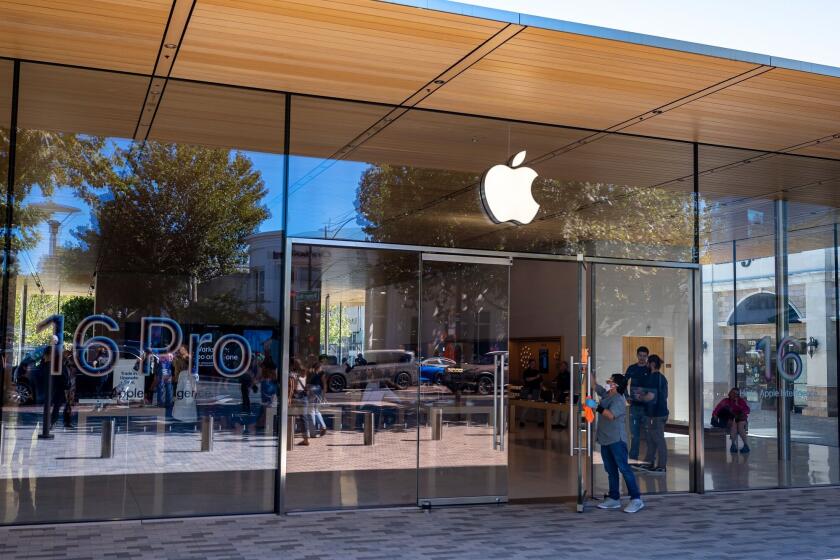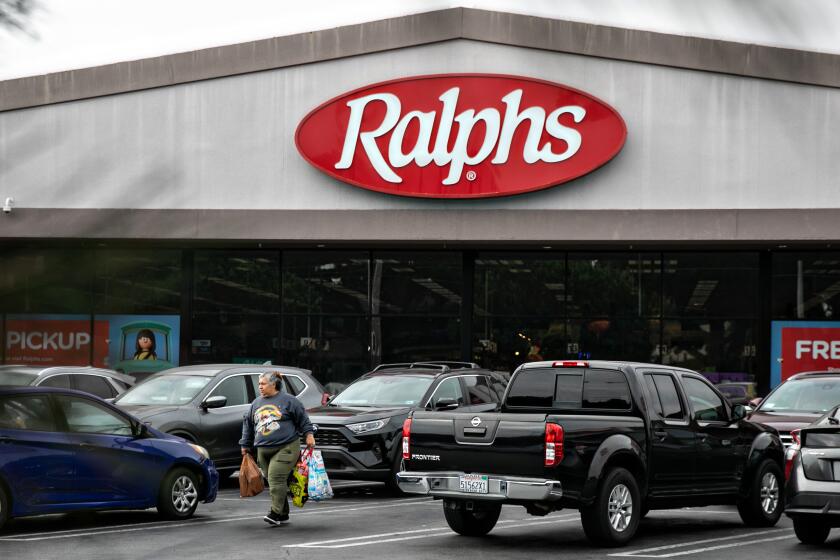Don’t go without auto insurance
- Share via
With more than 2 million Southern Californians expected to hit the freeways this holiday weekend, it’s a good time to note that there are believed to be millions of uninsured drivers statewide, and officials say the number is almost certainly growing because of the gasping-for-breath economy.
That can be a bad deal for the rest of us. Although most insurance policies include coverage for accidents involving uninsured drivers, you have to be able to identify the guy who hit you. If it’s a hit-and-run accident, which happens all too often, you could be out of luck.
Auto insurance is pricey. But for people having trouble getting by, the California Department of Insurance oversees a program that provides relatively low-cost liability coverage for about $400 a year.
“Times are tough and many families are looking for ways to cut corners,” said Molly DeFrank, a spokeswoman for the Department of Insurance. “Many are thinking about going without insurance, but that can be a horrible idea.”
Indeed, getting caught without coverage can result in a driver paying hundreds of dollars in fines and having his or her vehicle impounded.
State officials can’t say exactly how many uninsured drivers are out there -- it’s not like these folk are calling the Capitol saying, “Neener-neener, you can’t catch me.” But a 2008 report by the Insurance Research Council, an industry group, estimated that about 18% of California drivers lacked coverage.
DeFrank said the Department of Insurance has seen a correlation in the past between increases in the number of uninsured drivers and a rising unemployment rate. California’s jobless rate in 2008 was about 6%. It’s now more than twice that amount.
That doesn’t necessarily mean twice as many of the state’s nearly 24 million licensed drivers currently are uninsured, DeFrank said, “but it’s something we’re very concerned about.”
Me too. Earlier this year my car got rear-ended on a Los Angeles freeway. Maybe the guy who hit me was insured, maybe he wasn’t. All I know is that he took off without stopping and I was left holding the bag for a few hundred bucks in repairs.
The California Low Cost Auto Insurance program, which has been available statewide since December 2007, is intended for people making no more than $55,125 annually for a family of four ($27,075 for an individual driver).
To qualify, you also have to be at least 19 and continuously licensed for the last three years, and have a fairly clean driving record (no recent accidents involving injury or death). Also, your vehicle can’t be worth more than $20,000.
Coverage offered under the program is provided by private-sector insurers and isn’t subsidized by taxpayers.
It’s also the absolute minimum drivers must have to stay on the sunny side of the law. Basic policies under the program include coverage for $10,000 in bodily injury per person, $20,000 per accident and $3,000 in property damage.
That’ll pay your way for most fender benders. It’ll hardly scratch the surface of a major accident, especially one involving serious injuries or fatalities.
“This is bare-bones coverage,” DeFrank said. “The important thing is that you won’t be breaking the law when you drive.”
Better than nothing, in other words. And if millions of California drivers now lack coverage, every little bit helps.
For more info, call the Department of Insurance at (866) 602-8861 or check out its website.
Costly commode
Torrance resident Deborah Leister is a nurse, so she knows a thing or two about navigating the healthcare system. Or so she thought.
Before Leister, 57, underwent knee surgery recently, she made sure the doctor performing the procedure and the local hospital where it would be performed were both “in network” for her insurance company, Cigna Corp.
It never occurred to her that she would also have to ask about the bedside commode and walker that the hospital insisted she take home afterward. She found herself facing a nearly $300 bill for her “out-of-network” medical gear.
“Most people would just assume that anything associated with an in-network medical procedure would be in-network,” Leister told me. “Who would think to ask while they’re sedated and being discharged whether the commode is also in-network?”
Not me. And probably not you either.
I contacted Cigna to ask about the case. Shortly afterward, Leister said she received a call from a Cigna service representative, who said the hospital must have made a mistake by ordering out-of-network equipment. Cigna, the rep said, would now cover the expense.
Gwyn Dilday, a Cigna spokeswoman, told me the problem could have been averted if Leister had just called the insurance company right away. “She never told us she had a problem,” Dilday said. “We have no record that she called.”
Leister scoffed when I passed this along. “I called them at least five times -- at least,” she replied. “And they kept telling me it was out-of-network medical equipment. Why would I go to the L.A. Times without first exhausting all available options?”
She’s got a point. But at least the case of the costly commode is closed.
David Lazarus’ column runs Tuesdays and Fridays. He also can be seen daily on KTLA-TV Channel 5. Send your tips or feedback to david.lazarus@latimes.com.
More to Read
Inside the business of entertainment
The Wide Shot brings you news, analysis and insights on everything from streaming wars to production — and what it all means for the future.
You may occasionally receive promotional content from the Los Angeles Times.











